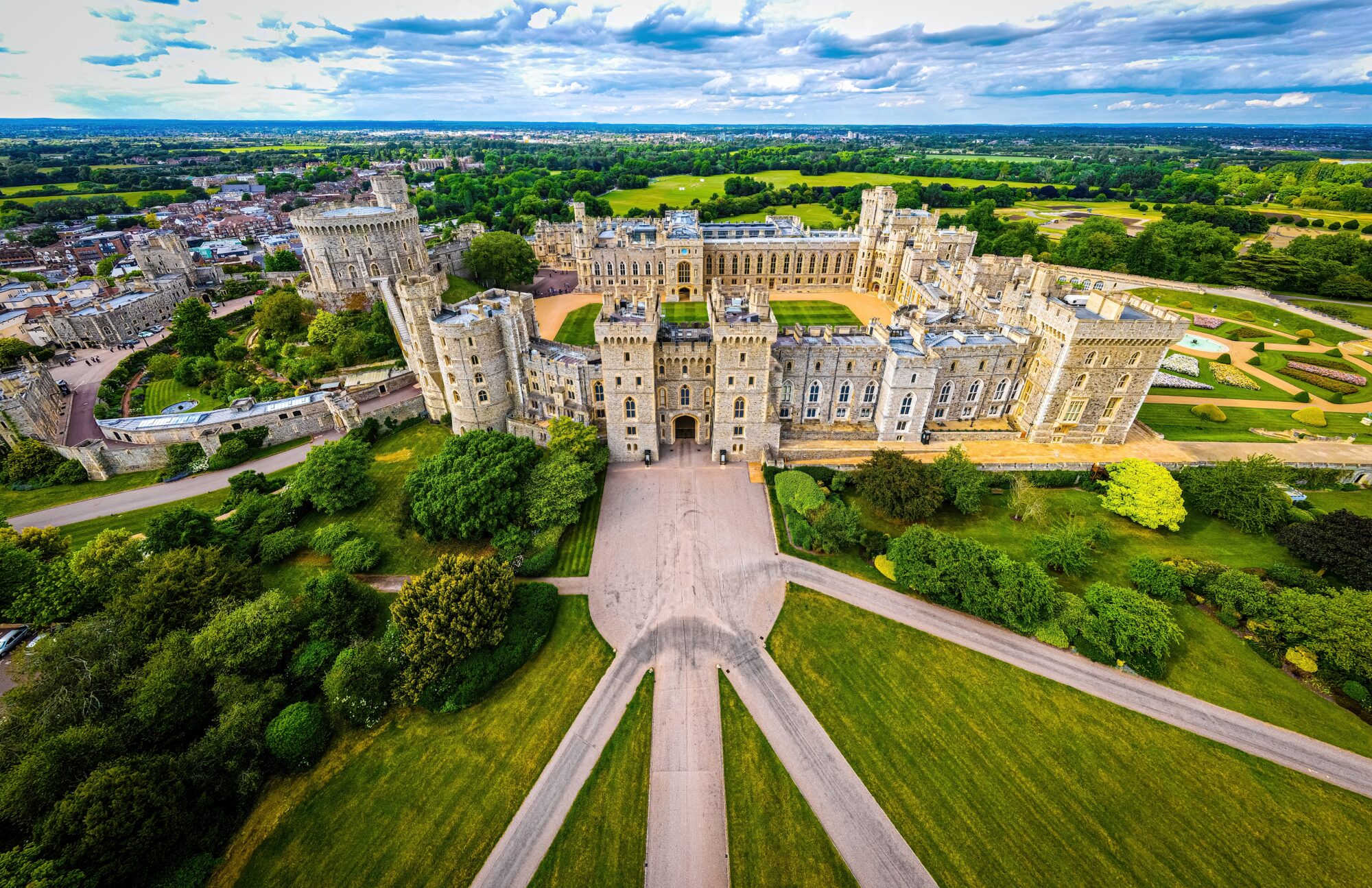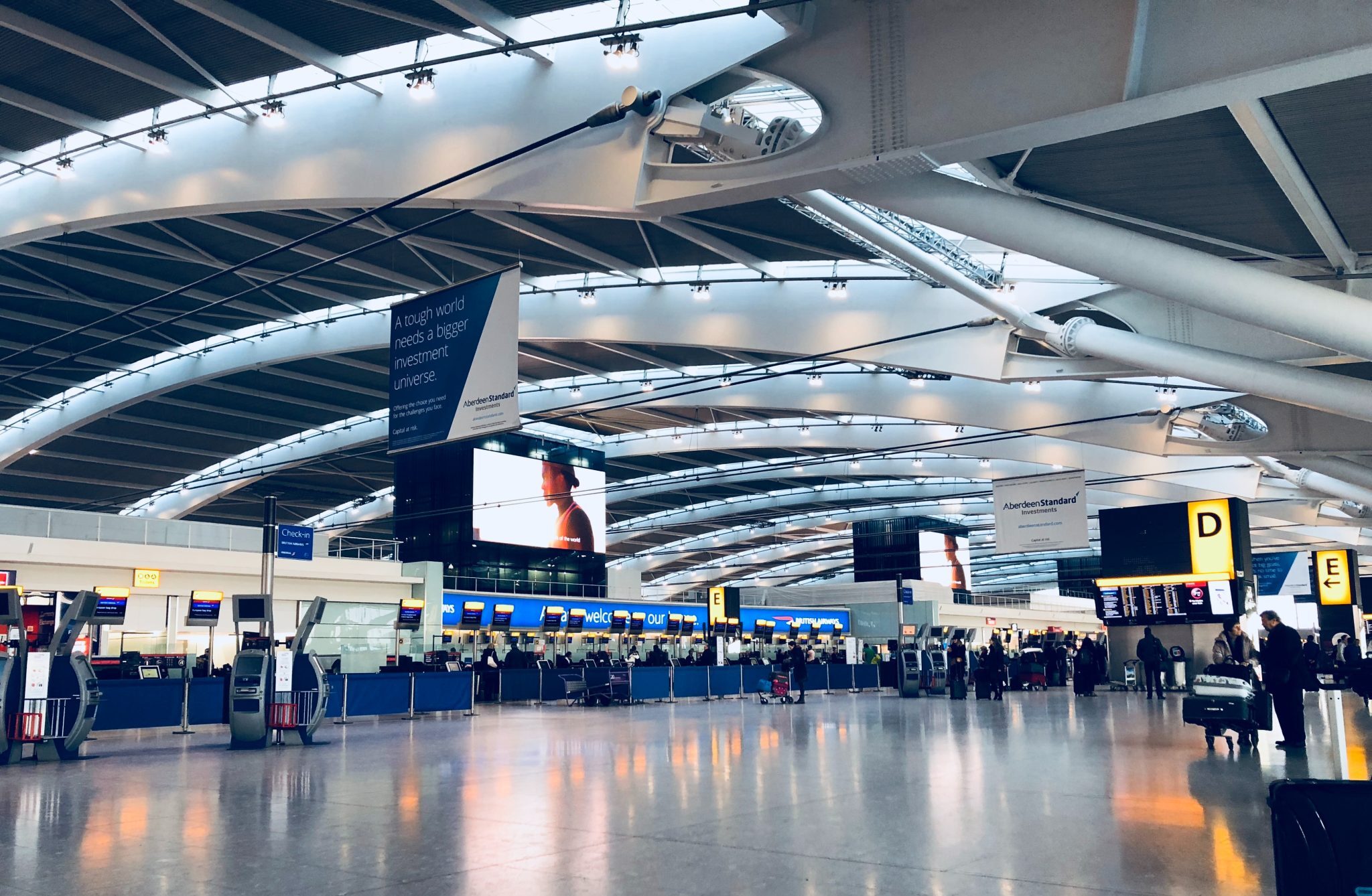Windsor Castle stands tall above its surroundings, perched on a hilltop. The formidable stone structures of the castle, which are often enveloped in a mystical fog, overlook Windsor Great Park and the town of Windsor from their perch above the cityscape. The royal house of Windsor has been the subject of considerable discussion in recent years, thanks to the popularity of the Netflix show The Crown. As her primary residence, Queen Elizabeth II held the castle in high esteem, ranking it among her most beloved royal residences. Many other British monarchs, including the late Queen, have resided at the castle, and each of them has left their imprint on its interior design and construction.
Table of Contents
ToggleThe history of Windsor Castle
After capturing the Crown in 1066 at the Battle of Hastings, William the Conqueror—a French contender for the English throne—founded Windsor Castle. The original castle was a simple square with four walls and a few tiny openings for windows; it stood on a man-made hill and was encircled by a moat. The construction of this fortress was part of William the Conqueror’s strategy to fortify his realm against potential invaders.
The royal family has always had mixed feelings towards Windsor Castle. Henry III began transforming the fortress into a royal palace in the 1200s. In order to provide the king and his family with contemporary conveniences in roomy quarters, Henry III constructed additional structures in the castle’s top half to serve as the royal state apartments. From the castle’s central Middle Ward, visitors may see several of Windsor Castle’s oldest structures up close.
The Round Tower, perched precariously on a hill and encircled by a moat garden, is another sight that visitors may see from Middle Ward. Modernisations to the tower’s framework in the 1800s rounded out its corners and added two storeys to make it more visually striking from a distance. No one is allowed to enter the Round Tower at this time since it houses the Royal Archives.
Visiting the Windsor Castle Complex
You can’t visit Windsor without seeing Windsor Castle. Windsor Castle, the world’s oldest and biggest still-occupied castle, has been home to the English royal family for more than nine centuries. The late queen made it her permanent home in her latter years as monarch, and it was her beloved weekend escape for many years despite being just 22 miles from central London.
No matter the season, anybody may stroll about Windsor Castle’s grounds—just don’t expect to see any royals there. Private apartments and gates, however, are off-limits. Fear not, however; the site is vast, and there is plenty to see. If you want to take your time exploring the castle grounds, you may buy a timed Standard Ticket from the Royal Collection Trust’s website.
Windsor Castle: what is there to see?
1. Statue to Queen Victoria
As you come out of the train station’s retail arcade, you’ll see a statue of Queen Victoria. As the Widow of Windsor, the longest-reigning queen (until Queen Elizabeth II exceeded her reign in 2015), it is suitable in honour to her. Following the death of her beloved husband, Prince Albert in 1861, Queen Victoria sank into a lifelong state of sadness and despair.
Queen Elizabeth II spent much of her time at Windsor as the British Empire rose to superpower status around her. After that, she stayed out of the spotlight for over two decades. Just a few meters to the right of this monument is the ticket office door.
2. Equestrian Statue of Charles II
When you leave the State Apartments or head up to the castle from the ticket office, you’ll see the Upper Ward Quadrangle. The equestrian sculpture of King Charles II stands at one corner of the quadrangle, facing the Round Tower. In recent years, the queen has begun to host official events in the quadrangle, including the Trooping of the Colour, and has welcomed foreign heads of state.
As a tribute to the monarch who restored the English monarchy during the English Civil War, this 17th-century sculpture was created. Modern Windsor Castle owes a great deal to the renovations made by King Charles II. Distinct from other depictions of the monarch, this one shows him dressed as Ceasar, the Roman emperor, replete with laurel leaves and Roman armour, rather than as an English monarch.
3. Upper Ward and Lower Ward
Housing the private homes of His Majesty the King and the Royal Family, as well as semi-state rooms and state flats, is the Upper Ward. Because of its proximity to the entryway and the audio guide pickup, it is fairly straightforward to notice initially.
In the Lower Ward is the magnificent St. George’s Chapel. Beside the chapel in this courtyard is where the changing of the guard occurs. From 1660 till now, at around 11 a.m. on Tuesdays, Thursdays, and Saturdays, there has been a 45-minute ceremony. Observing the changing of the guard at the castle requires a ticket.
4. The Round Tower
As a public display of his power over the Saxons, William the Conqueror chose the location for Windsor Castle in the eleventh century. Since it was the highest point of the castle facing the Thames Valley, William would know this mound today as the site of the Round Tower. As an integral aspect of the fortress’s design, this spot formerly housed a wooden keep.
A stone circular tower succeeded the wooden stronghold that Henry III had earlier built. Only King Edward III had the privilege of residing in the Round Tower as his private abode. In the 1820s, King Edward III extended the Round Tower, which is still visible today. The Royal Archives are located in the Round Tower, which is now a famous emblem of Windsor Castle.
5. View of the Long Walk
From the State Apartments, you can see the Long Walk, which is considered to be one of the greatest vistas in England. An attractive 2.6-mile tree-lined promenade, The Long Walk begins in Windsor Great Park and extends through it.
Prince Philip, Duke of Edinburgh, who passed away recently, was instrumental in restoring the Long Walk that King Charles II had originally constructed. In his role as Windsor Park Warden, he planted oak, chestnut, and other trees to replace the original sickly elms. The path ends in a sculpture of King George III, popularly called “Farmer George,” who is shown riding a horse and is famous for his fondness of Windsor. It takes around 45 to 60 minutes to walk the length of the Long Walk to reach the monument.
6. Waterloo Chamber
Like St. Petersburg’s Alexander Hall in the Winter Palace, Windsor Castle has a chamber honouring the fallen and the triumphants of the Napoleonic Wars. Designated after the pivotal Battle of Waterloo, where the Allies’ Duke of Wellington led them to victory against Napoleon, a military genius from Corsica, the chamber is a fitting tribute to that historic event. Notable figures shown here include Pope Pius VII, Archduke Franz Ferdinand of Austria, Czar of Russia, and Wellington. Queen Victoria, who was also the Empress of India, received the hand-woven carpet as a gift in the late 1800s. It originates from India.
Royal family members and the queen hold formal ceremonies in the chamber these days. The Waterloo Chamber remains an intriguing chamber to explore. Pantomime pictures from World War II are on display in the room at the moment.
7. The Crimson Drawing Room
One striking feature of the State Apartments is the Crimson Drawing Room. It is a perfect illustration of the goal of the 19th-century restorations carried out by King George IV, dripping with red velvet and gold. Though there are a few photos of his brothers in the chamber, the state portraits of His Majesty King George VI and Queen Elizabeth the Queen Mother take centre stage.
8. Queen’s Presence Chamber
Elizabeth II’s (Queen Catherine of Braganza) opulent chambers include the Queen’s Presence Chamber. Picture yourself whisked away to the late 17th century with the help of Italian artist Antonio Verrio’s paintings, luxurious tapestries, and frescoed ceiling. The ceiling painting depicts Queen Catherine in a virtue-filled allegorical setting. Among the few portraits of Prince William, Duke of Gloucester, this chamber has one.
Princess Anne, who would eventually become Queen Anne, had just one son, and this baby prince was James II’s grandchild. With the inevitable ascension of young Prince William came the expectation of firmly establishing Protestant authority in Great Britain. The young prince’s untimely demise altered the trajectory of British history, as he did not survive until his twelfth birthday.




